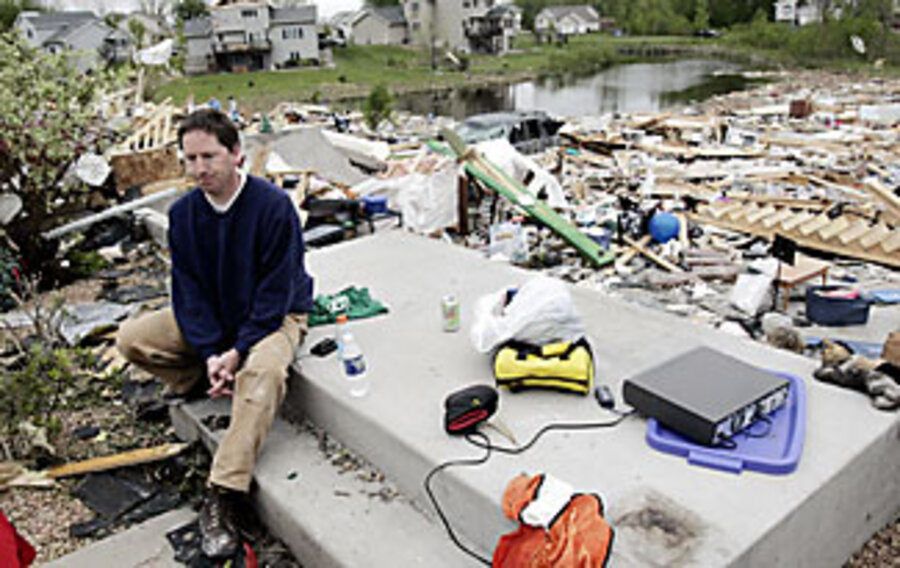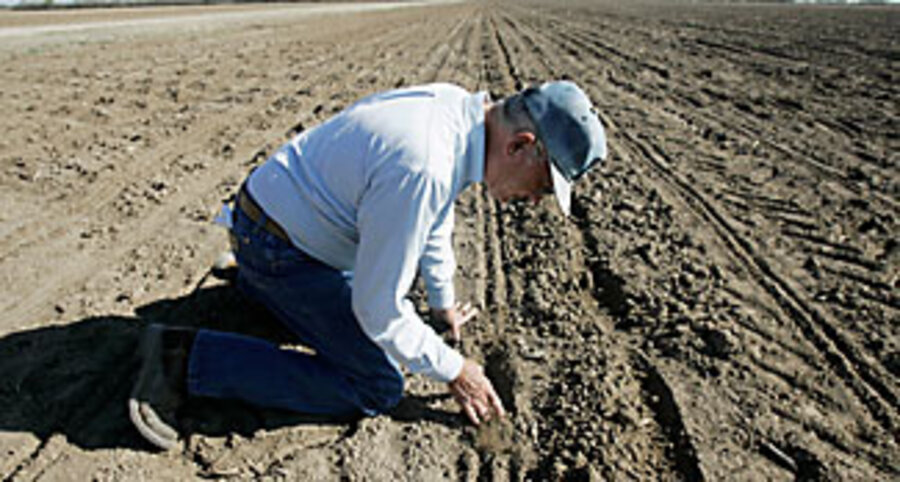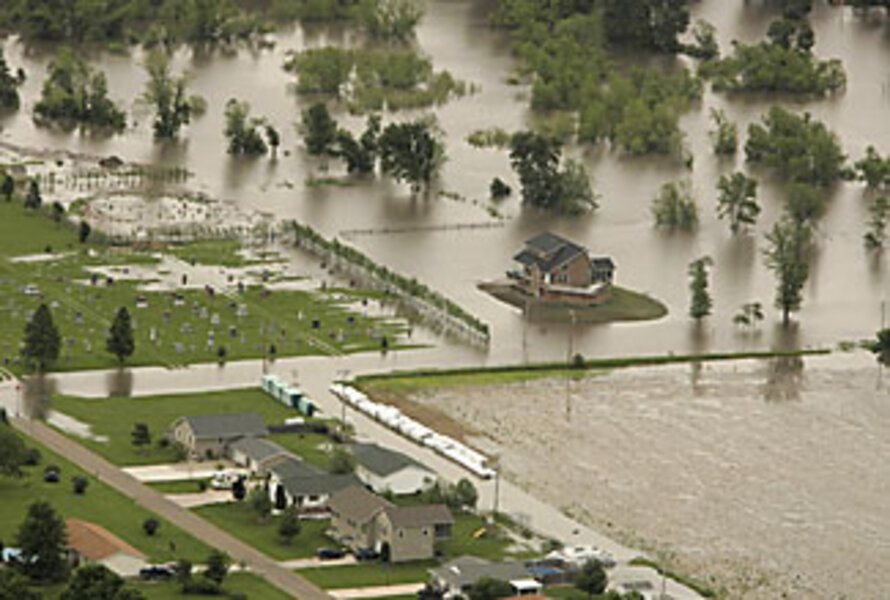A weather-beaten economy
Loading...
| Washington
The severe weather that has battered the interior US this year is taking an economic as well as a human toll.
Damage from recent rains and flooding in the upper Midwest appears likely to reach hundreds of millions of dollars, according to the National Weather Service. Roads and bridges have been washed out, crops damaged, and hundreds of homes and businesses inundated with floodwaters.
This isn't good news for the nation's already-teetering economy. The price of corn, wheat, and soybeans has moved up sharply in recent days, in part due to poor planting conditions in the agricultural heartland. The closure to barge traffic of 200 miles of the Mississippi River this week further will disrupt the distribution of key commodities from grain and coal to steel and fertilizer.
For the hard-hit communities themselves, however, tornadoes or floods need not be an economic disaster, particularly if they wisely use aid and recovery dollars.
Once a community has been hit, it tends to come back stronger three to four years out, says Bradley Ewing, an expert in ecological economics and professor of operations management at Texas Tech University in Lubbock, Texas.
Tornadoes have been the deadliest of the weather phenomena that have afflicted the US this year. Even prior to the tragedy of June 11, in which four Boy Scouts died when a twister hit their camp in western Iowa, 2008 was shaping up as the worst year for tornado fatalities in a decade.
But the heavy rain of the last few weeks has perhaps had a greater impact on the regional economy.
Flood damage in central Indiana, for instance, now totals an estimated $126 million, according to a study co-written by Michael Hicks, an economist at Ball State University in Muncie, Ind. Ruined public infrastructure – roads, bridges, sewers – accounts for $45 million of this cost. Inundated homes and private businesses account for the rest.
In Nebraska, nearly two-thirds of the state's 93 counties have been affected by the severe weather, according to Gov. Dave Heineman. Public infrastructure damage is now $20 million and may rise.
In Illinois and Missouri, the Mississippi River may reach flood levels not seen since 1993, according to the National Weather Service. Barge traffic in this stretch of the Big Muddy may be halted for as long as two weeks.
The true cost of the floods may not show up for months, say experts. Some worry this year's rains might lead to a repeat of 1993, when Midwest floods cost the nation $21 billion, according to figures compiled by the National Oceanic and Atmospheric Administration.
Already the floods are showing up in commodity prices. On June 11, corn prices at the Chicago Board of Trade rose above $7 a bushel for the first time, capping five straight days of record highs.
The Federal Reserve Board's latest Beige Book on the regional economic conditions noted that some Midwest corn farmers have been so affected by standing water in their fields that they have had to replant their crops, a first for many. Nor is corn the only crucial commodity affected. US cotton growers this year may produce their smallest crop since 1998, due to cool, wet weather, according to the National Cotton Council.
However, agricultural communities themselves tend to recover from natural disasters fairly quickly, according to Mr. Ewing of Texas Tech.
That is because they have more coping mechanisms in place to recover from disasters than other types of communities. Farmers are used to bad weather, and hedge prices. They also have access to a wide array of government support payments.
"Economies that rely more on services also tend to rebound fairly quickly. If it's a heavy industry economy, it tends to take longer to come back," says Ewing.
Natural disasters can benefit some local economies. This year, for instance, Ft. Smith, Ark., has seen an influx of contractors and other personnel drawn in to help repair damage suffered by the surrounding area in severe storms last month.
But for the nation as a whole they represent a net loss, say some researchers.
"Overall damages and costs are generally much greater than any small to intermediate term gains," write National Oceanic and Atmospheric Administration researchers Neil Lott and Tom Ross in a recent survey of the billion-dollar weather disasters that have hit the US since 1980.
Overall, weather-related events cost the United States tens of billions of dollars every year, on average, according to a survey of the economic effect of climate by the Government Accountability Office.
Between 1980 and 2005, insurers paid out $320 billion in damage claims for weather disasters, according to the study. And insured losses account for only about 40 percent of the total economic damage of these states, according to the study.
The floods of 1993 were one of the most expensive natural disasters to hit the US in recent decades. But in general hurricanes are far and away the most destructive type of storm, accounting for nearly half of all dollar damage.
In 2005, hurricane Katrina caused well over $100 billion in damage, according to US government estimates. In 1992, hurricane Andrew caused over $27 billion in damage, destroying or harming over 127,000 homes.







